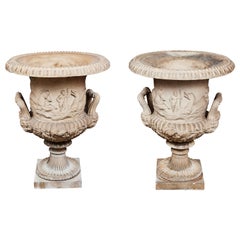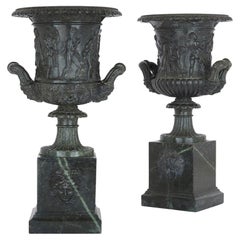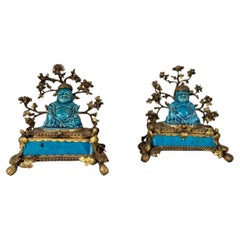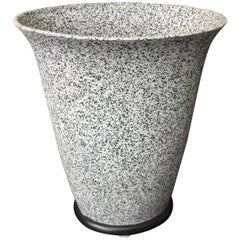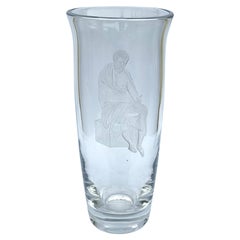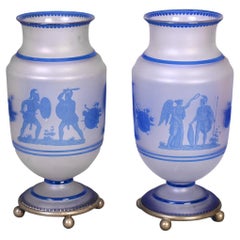Classical Greek Vases and Vessels
There is rare surviving furniture from ancient Greece, yet this classical style has informed design for centuries. Interiors of houses in antiquity were minimal, with much of a room’s color coming from frescoes on the walls and mosaics on the floors. Classical Greek furniture was sparing but finely crafted and influenced by Egyptian furniture design through Mediterranean trade.
Furnishings of the period were usually made from local wood like cypress, cedar, oak and willow from ancient Greece’s plentiful forests, although some pieces were carved from marble, such as a 300–200 B.C. throne with lion legs and a curved back now at the Getty Villa. Comfort and clean lines characterized designs during the Classical era, the symmetry and thoughtful proportions reflecting the architecture of Greek temples.
Some pieces of ancient Greek furniture were simple, rectangular platforms like the klinē, a multipurpose ancestor of today’s couches or daybeds that held cushions stuffed with wool, dry grass or down. These structures were used for both sleeping and dining, which wealthy Greeks did while reclining. At night, oil lamps illuminated rooms that frequently surrounded a garden courtyard.
Most of what scholars have learned about Greek furniture design owes to its representations in art like vases and stelae. The portable diphros stool, with its backless design and four turned legs, was one of the more common types of seating in daily Greek life — it appears as such for the gods on the Parthenon frieze. Stools without backs have been found in early Roman tombs, while benches were also common Greek seating furniture created for use in theaters. In houses of the Hellenistic period, benches seemingly functioned as tables, too.
Some designs evolved through adaptations by the Romans, including the klismos chair. After prominent archaeological excavations at Pompeii and Herculaneum, the klismos chair — with its four saber legs and the elegant curves that define its back — was a source of inspiration for aesthetics in eras ranging from 18th-century neoclassicism to 20th-century Art Deco.
Find a collection of Classical Greek decorative objects, wall decorations and building and garden elements on 1stDibs.
Late 19th Century American Antique Classical Greek Vases and Vessels
Terracotta
19th Century Italian Antique Classical Greek Vases and Vessels
Marble
Mid-20th Century French Classical Greek Vases and Vessels
Porcelain
1960s Italian Vintage Classical Greek Vases and Vessels
Ceramic
Early 20th Century British Classical Greek Vases and Vessels
Glass
Mid-19th Century French Antique Classical Greek Vases and Vessels
Glass
19th Century French Antique Classical Greek Vases and Vessels
Marble, Ormolu
19th Century French Antique Classical Greek Vases and Vessels
Glass
Mid-20th Century Greek Classical Greek Vases and Vessels
Bronze
